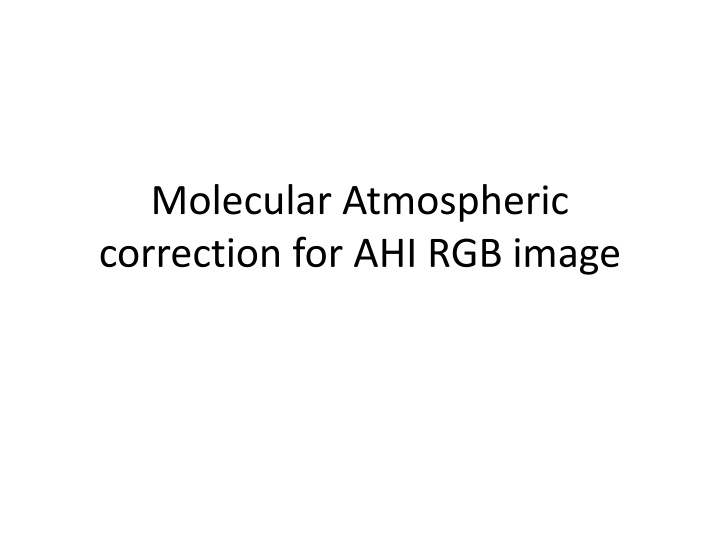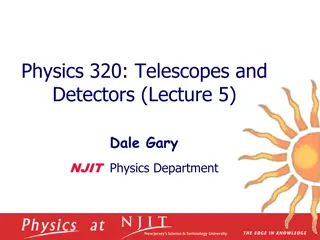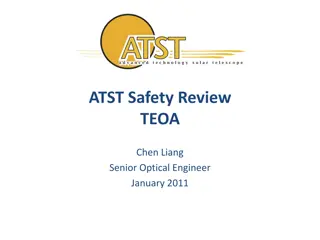Atmospheric Correction Techniques for Satellite Image Enhancement
Atmospheric correction is essential for improving the quality of Remote Sensing images captured by satellites. This process involves correcting for the effects of atmospheric gases such as scattering and absorption on the measured Top-of-Atmosphere (TOA) reflectance. Techniques like molecular correction, gas absorption correction, and radiative transfer play a crucial role in obtaining high-quality RGB images. MODIS C005 and C006 provide methods for correcting gas absorption and calculating air mass factors. The use of Rayleigh scattering optical depth and gas absorption tables further aid in enhancing satellite image data for better analysis and interpretation.
Uploaded on Dec 11, 2024 | 2 Views
Download Presentation

Please find below an Image/Link to download the presentation.
The content on the website is provided AS IS for your information and personal use only. It may not be sold, licensed, or shared on other websites without obtaining consent from the author.If you encounter any issues during the download, it is possible that the publisher has removed the file from their server.
You are allowed to download the files provided on this website for personal or commercial use, subject to the condition that they are used lawfully. All files are the property of their respective owners.
The content on the website is provided AS IS for your information and personal use only. It may not be sold, licensed, or shared on other websites without obtaining consent from the author.
E N D
Presentation Transcript
Molecular Atmospheric correction for AHI RGB image
Satellite measured TOA reflectance atmospheric gases correction gas free TOA reflectance is necessary to produce high quality RGB image. Satellites sensors measured TOA reflectance (or radiance) required appropriate correction for atmospheric gases. That includes both scattering (Rayleigh) and absorption/transmission of gas.
Radiative Transfer : T(G) is the total transmission gas correction ( as a function of O3, Dry gas (CO, CO2, etc ) absorption) T(G) = T(O3)T(Dry gas)= exp(-air_mass x tauO3) x exp (-air_mass x tau drygas) Rayleigh reflectance is estimated from single scattering approximation as a function of Rayleigh Optical Depth for each bands S is Atmospheric spherical albedo
MODIS C005 Gas absorption correction of L1B reflectance
MODIS C006 air mass factor calculation is modified
MODIS C006 Gas absorption table Note that the K coefficients are used when NCEP data are valid, whereas the US1976 optical depths are used when NCEP data are missing. For Other gases, we took climatology to be the sum of all major gases that are not H2 O and O3 . Thus in addition to CO2 , other gases include CO, N2 O, NO2 , NO, CH4 , O2 , SO2 and other trace gases.
Values of the Rayleigh-Scattering Optical Depth Obtained for the Six Standard Atmosphere Model from 0.2 to 4 micro (Tomasi et al., 2005)























